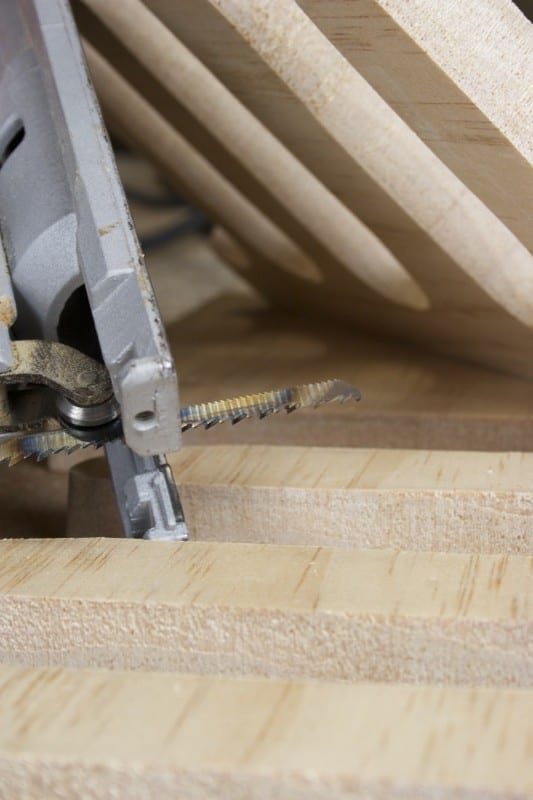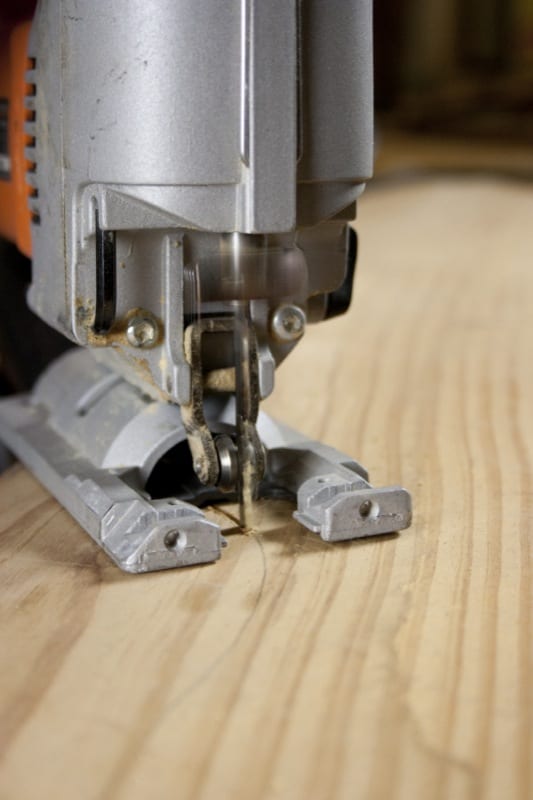In the construction industry, Spyder Tools is a fairly young company. In 2007 they broke into the market with a scraper blade that fit into a reciprocating saw… and never looked back. This year they brought to market two new double-sided Jig Saw blades. The Spyder Jigsaw blades come in two models, the 4.5″ 300010 and the 4″ 300011. But how do you review a jigsaw blade in a way that really gets across its highs and lows? Simple, you put it into the hands of a master trim carpenter and let him loose. David Delk has been doing carpentry in one form or another professionally for over 35 years. We let him use the new Spyder Jig Saw blades and then grilled him about his experiences.
Editor’s Note: Check out our best cordless jigsaw reviews article for our top recommendations.
Spyder Jigsaw Blades Pro Tested
Pro Tool Reviews: David, what was your first impression of the Spyder Jigsaw blades?
David Delk: They looked super aggressive, particularly the 300010. They’re far thinner than the Spyder reciprocating saw blades. They also have an interesting stagger on the blade points, almost like a chainsaw blade or the alternating tooth configuration on a miter saw blade.
PTR: What did you do first with the blades?
David: First I went for the more aggressive-looking 300010 and marked out a loose, free-form pattern on some 2x material, with no more radius than the bottom of a water bottle. With the 300010 on that pattern, I didn’t really get any blade chatter with my Ridgid R8831B jig saw—the shoe didn’t come off the wood. And I wasn’t putting a ton of weight on the material either, particularly since I was using a plastic saw horse.
After making some more cuts it seemed that the 300010 is clearly designed for 2x material. It has enough back edge to clear a full inch and a half. I’d say this blade was perfect for cutting corbels on a house or making some fancy pergolas. Compared to a typical jig saw blade, using the Spyder would make things go a lot more smoothly in thicker wood cuts like that.
PTR: What else did you notice compared to the blades you typically use?
David: One thing that I could appreciate right off the bat was that the Spyder blade didn’t have any significant blade lean. When you used it, the design seemed to help keep the blade from walking when you’re following a radius.
PTR: So you get straighter cuts along the edge?
David: Exactly.
PTR: So what about the 300011. How did you use it and what are your thoughts?
David: Very similar, but with the shorter 300011 blade we went for some 3/4″ red oak. After cutting out a series of curved pieces of wood we noticed that the inside cut edge on the pieces was almost polished smooth. It felt like it had been sanded. The outside edges showed just a little more texture, but both were still impressively smooth. We also did some tighter radius cuts and I found that I was able to really control the blade well over narrow arcs.
Final Thoughts
PTR: So what’s the takeaway from all this? Would you buy these blades?
David: Well, the blades I typically use cost about $2.88 for a 3-pack and they get the job done, but for more detailed work or a smoother edge, the Spyder blades, even at $10 are pretty compelling. It’s almost like you get a two-for-one deal, cutting and sanding. And you can really push the radius tight because the backside blade cleans your cut as you go. When I flipped over the wood, the bottom of the piece was absolutely pristine. If you can reverse-cut your wood upside down you’re going to have an almost flawless finish on that edge. These are nice blades, I’ll give them the old recommendation.
If you’ve got a project story you’d like to share with us, please email it to us at reviews AT protoolreviews.com and we can consider using it in a future article or contacting you to get more information.







